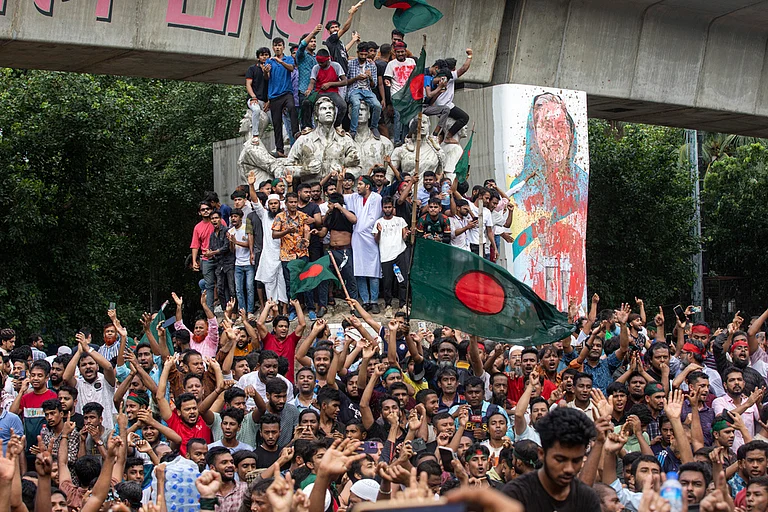In light of a volatile mix of political unrest and catastrophic flooding, Bangladesh's garment industry, a vital economic pillar of the country, is facing a severe crisis leading to slowing down of years of rapid growth and global prominence.
About the anti-government protest in Bangladesh
The unprecedented anti-government protest overturned Awami League's Sheikh Hasina-led government on August 5 as she resigned as prime minister and fled the country. She landed in India on August 5 and is currently staying there.
The two-month-long anti-quota protests have led to widespread demonstrations, curfews, and violence. This unrest has not only disrupted factory operations but has also caused significant economic losses.
Bangladesh protest: How is the garment industry affected?
In Bangladesh, the textile and garment industry, which accounts for over 80 per cent of Bangladesh’s total export earnings and contributes approximately 11 per cent to the nation’s GDP, has been hit hard. This industry contributes significantly to export earnings and employs millions.
Factories were forced to close, and with the peak season for Christmas shipments and the booking of next season’s orders upon us, the timing of the unrest has exacerbated the crisis.
According to the Bangladesh Garment Manufacturers and Exporters Association (BGMEA), a substantial financial loss estimating a shortfall of Taka 6,400 crore (approx Rs 4,500 crore) has been reported due to the shutdowns and communication breakdowns.
Former cabinet minister and president of BGMEA, Gholam Sarwar Milon, also said the garment industry has been badly hit by both the political unrest and the floods, as both production and the supply chain of raw materials have been severely affected.
According to BGMEA sources, out of 3,000 major and small garment factories in Bangladesh, nearly 800-900 have closed since last year.
The Bangladesh Textile Mills Association has projected losses of around USD 58 million. The impact on the industry is compounded by the recent flooding, which has further disrupted logistics and exacerbated the economic fallout.
Impact of the flood situation
Besides the political unrest in the country, the catastrophic floods as well have exacerbated the situation causing damage to infrastructure and further complicating logistics.
“Due to the floods, the supply chain has been badly affected. We reached a high in 2023-24 where our garment exports touched around USD 46 billion. This time it is likely to be much less,” said former army major and owner of a woollen garment factory, Mahfuzur Rehman.
The sector’s growth from a small-scale operation in the early 1980s to becoming the world’s second-largest apparel exporter, after China, underscores its strength.
In response to the crisis, the interim government, now led by Nobel Peace Prize-winning economist Muhammad Yunus, has prioritised restoring order and stability.





















